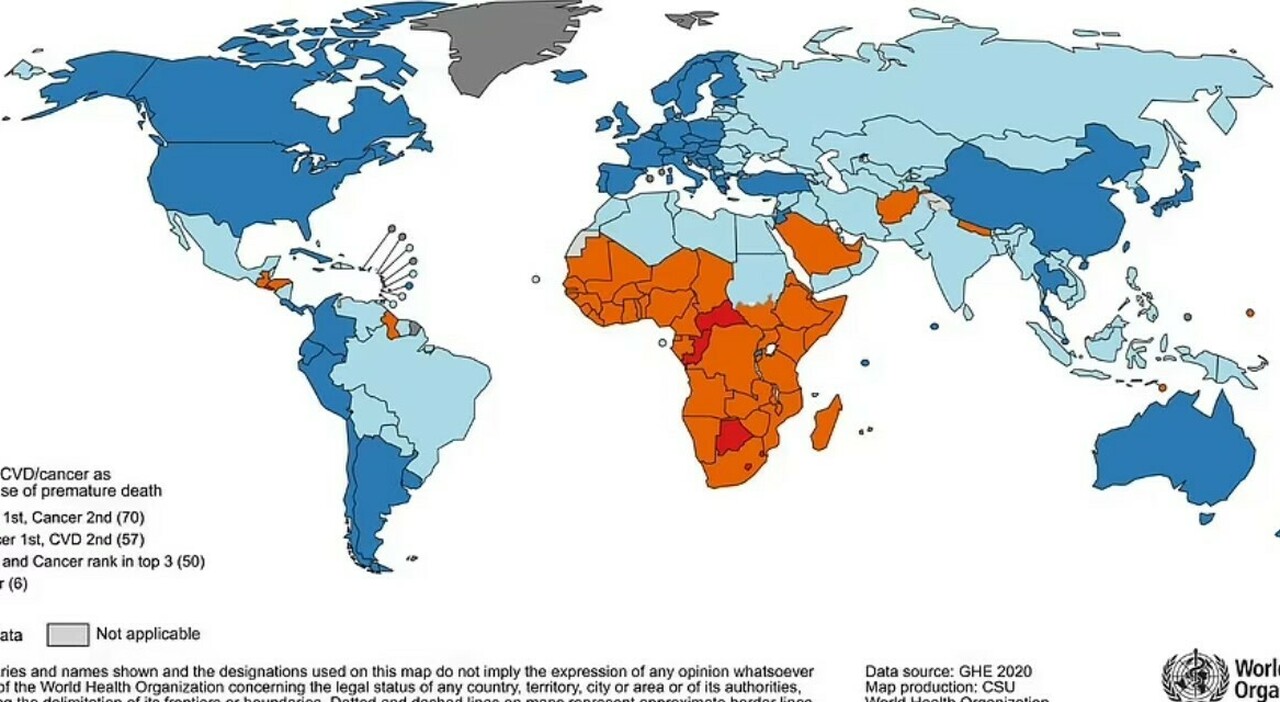Doctors around the world are sounding the alarm over a rise in young people being diagnosed with cancers more commonly associated with the elderly. Between 1990 and 2019, cancer cases in young patients increased by 79% and deaths increased by 28%. In 2030, diagnoses predicted by study projects will continue to increase by 31% and deaths will increase by 21%.
INSIGHTS
Almost every continent is seeing an increase in various types of cancer in people under 50, which is particularly problematic as the disease tends to be diagnosed in later stages – most doctors are not trained to look for it in young people . The disparities in disease rates and types perplex scientists and have prompted some to launch decades-long research projects involving hundreds of thousands of people from around the world.
Colon cancer, a screening campaign begins at the Bio-Medico Campus
Increase in the world
Globally, for example, Australia had the highest number of early-onset cancer diagnoses in the world, with a rate of 135 per 100,000 people. Neighboring New Zealand has the second-highest rate, with 119 cases in people under 50 per 100,000 people.
In the first case, breast cancer is the most widespread disease. While in New Zealand we find colon cancer in first place. Even in Asia, Japan and South Korea the data is quite alarming, the United States is in sixth place, with 87 cases per 100,000 people under 50 and the United Kingdom is in 28th place, with 70.5 cases per 100,000 people. The cancers that grow most rapidly are throat and prostate cancers. Early-onset cancers with the highest mortality include those of the trachea, lung, stomach, and colon.
Nutrition and habits
Experts have long speculated that rising obesity rates and early cancer screenings, as well as high-fat diets, alcohol consumption and tobacco use, may be behind the rise. However, because lifestyles and habits vary so widely from country to country, these factors are not thought to entirely explain the increase. Daniel Huang, a hepatologist at the National University of Singapore, told Nature: “Many have speculated that things like obesity and alcohol consumption could explain some of our findings. But this is not the case: a more in-depth analysis of the data is needed.”
Genetics and immune response
More recent research has begun to focus on the genetic component of early-onset cancer. Some have found that younger people develop more aggressive tumors than older patients. Harvard Medical School pathologist Shuji Ogino and his colleagues also discovered a weakened immune response in people with early-onset cancers. However, the differences are still subtle, Ogino said, and a clear reason cannot be determined. A new field of research is the impact on early-onset cancer of the body’s microbiome, the collection of all microbes, such as bacteria, fungi, viruses and their genes, that live naturally in the human body. The microbiome can be “disturbed” by dietary changes and increased antibiotic use. Disruption to the microbiome can lead to inflammation, which has been linked to the increase in several diseases, including cancer.
Colon cancer
Of particular concern is colon cancer among young people. Data showed that the rate of cases among people aged 20 to 34 increased by 40% between 2010 and 2020. And it is expected to increase by 90% by 2030. Colon and colon cancers rectum are the third most common type in the United States and the third leading cause of death in both men and women.
Data in Italy
According to the ISS, every year in Italy around 11,000 people aged between 15 and 39 (50 per 100,000 people of the same age) get cancer. This data reflects the incidence of some highly curable and curable neoplasms such as testicular tumors and thyroid tumors, for which deaths amount to approximately 2,600 cases (12 per 100,000). Out of a total of 21 million people between the ages of 15 and 39, it is estimated that there are approximately 100,000 adolescents and young adults affected by cancer (diagnosed with cancer in the last five years). In 1995, approximately 4,700 males aged 15-39 were diagnosed with cancer, while approximately 1,255 deaths occurred. The corresponding values for women are 6,100 and 1,335. Therefore women appear relatively disadvantaged compared to men (figures 1, 2 and 3). The frequency with which the disease occurs in men is quite similar in Italy to that of Europe and the United States, with values around 41 new cases per 100,000 young adults; in women, however, the Italian picture is slightly disadvantaged when compared to the European one, but clearly better than that of the USA, where 64 new cases are recorded per 100,000 women compared to 52 in Italians. Data emerge from the research results which testify to the seriousness of the incidence of some types of cancer, in particular breast cancer and testicular cancer. The numbers of these tumors are generally known, but have never been linked to this age group.
© ALL RIGHTS RESERVED
